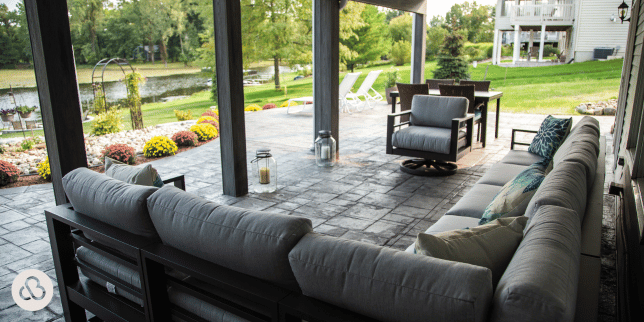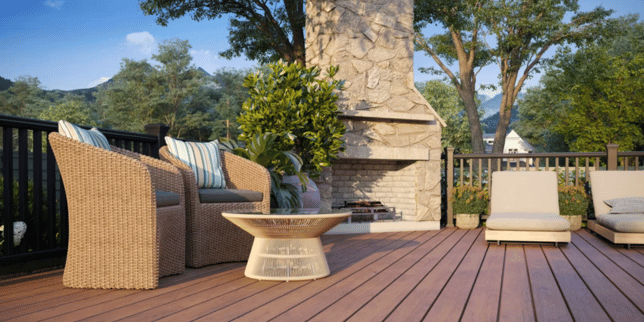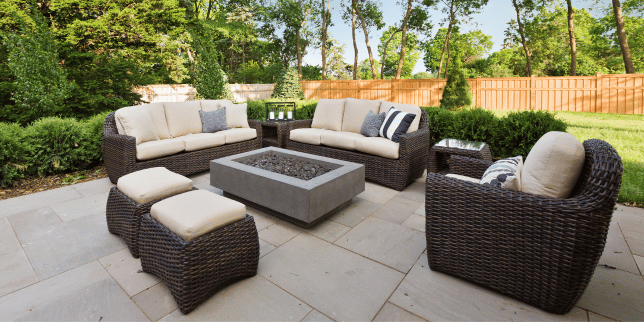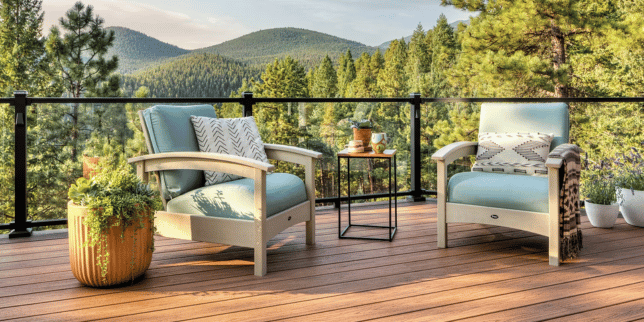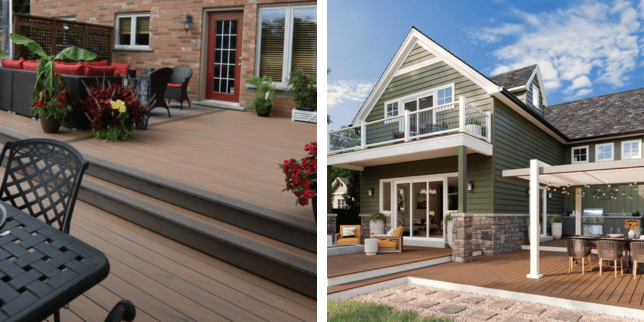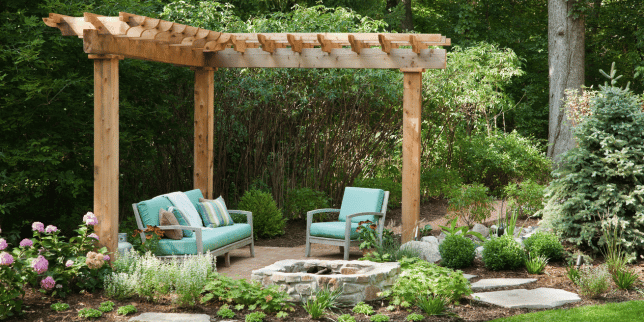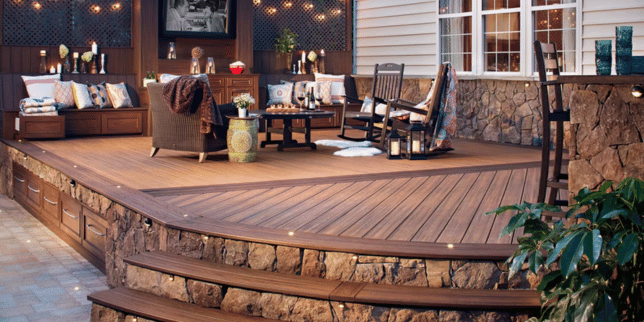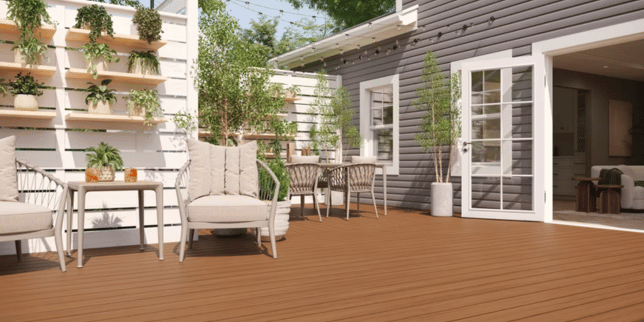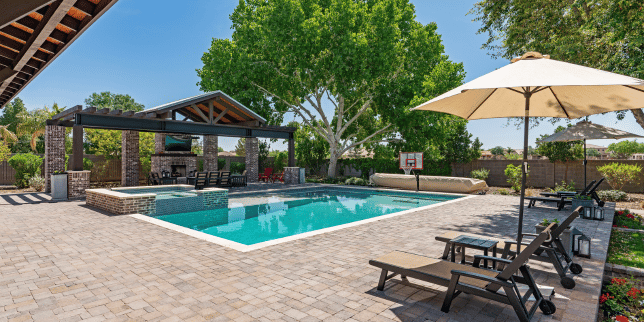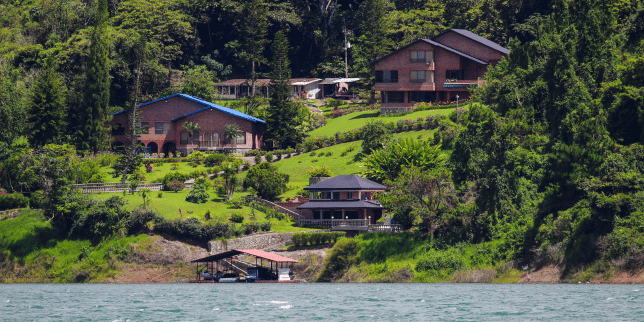
Staying in your home as you age requires preemptive planning for remodels and additions that will help make your living spaces accessible - especially when it comes to redesigning or building your existing deck.
Without properly exploring and implementing the right design, you might end up with an unusable outdoor space that could lead to falls and subsequent injuries.
As experts in aging-in-place home remodeling for the past 15 years, we understand the value of staying in your home and enjoying familiar spaces. You have built memories there and can continue creating new ones.
That’s why at Custom Built Design & Remodeling, we have Certified Aging In Place Specialists (CAPS) to serve you. Certified Aging In Place’s goal is to help you have the best possible experience in your home throughout all your years.
In this article, you will learn more about 5 safe and accessible designs, their recommended functions, and which could be right for you:
1. The Accessible Oasis for Green Thumbs
Got a natural green thumb and want to tend to your garden comfortably? This deck design lets you customize the height of your garden beds for easy access.
Advantages:
- Dedicated space for your garden with enough room to prevent bumping into your plants
- Reachable garden beds that prevent you from bending or reaching too far to care for your garden.
You deserve to enjoy the little things in life, including gardening flowers and assorted fruits or vegetables to enrich your daily meals.
Using raised or lowered garden beds, The Accessible Oasis encourages direct access to your designated gardening area. To accommodate this design, install or create wider walkways to ensure safe maneuvering between your garden and other seating areas.
Want to add even more safety and value to your green corner? Add a grab bar that stretches the length of your garden bed. This will give you a sturdy surface to lean on as you plant seeds or pull rooted vegetables like carrots or potatoes.
2. The Cozy Nook for a Shaded Retreat
The cozy, covered retreat deck design for aging in place perfectly balances comfort, accessibility, and aesthetics.
Advantages:
- Provides ample seating areas with comfortable and accessible seating.
- Covered seating area with customizable shading options, including pergolas, retractable awnings, wind sails, and larger umbrellas.
This design focuses on creating a warm and inviting outdoor space that promotes relaxation, socialization, and independence for everyone.
From cushioned lounge chairs to cozy benches, the deck provides a variety of seating choices that offer both support and relaxation. The seating is strategically placed with nearby grab bars to allow easy access and maneuverability for individuals with mobility aids, ensuring that everyone can find their ideal spot for enjoying the outdoors.
This design’s retractable awning or pergola helps protect you and your family from the hot sun for optimal enjoyment. Your covered area will infuse a visually-communal appearance to your deck, making it perfect for afternoon conversations or puzzles.
3. The Multilevel Haven of Ramps
The Multitiered Haven design features multiple levels, allowing for seamless transitions between different deck areas.
Advantages:
- Tiered deck design with different levels for various activities.
- Wide pathways and gentle slopes connect each level for easy maneuvering.
Each level has been thoughtfully created to allow for particular activities like dining, relaxing, or gardening. This architectural feature creates a lively and visually appealing outdoor area while reducing the need to climb steep inclines or stairs.
The Multitiered Haven design includes ramps to ensure straightforward access between your deck’s tiers. The ramps allow older people to travel freely and independently throughout the deck since they are broad enough to fit mobility aids like wheelchairs or walkers. To increase stability and safety, the ramps have strong handrails and gradual slopes.
4. The Entertainment Hub for Family Dinners and Game Night
The Entertainment Hub creates a lively gathering place where senior residents may mingle, unwind, and take part in various forms of entertainment in the privacy of their own backyard.
Advantages:
- Spacious deck with ample seating and dining areas.
- Well-placed lighting for evening gatherings and safety.
- Incorporates a built-in grill or outdoor kitchen for convenience.
The layout of the Entertainment Hub is open and roomy, which promotes interaction and facilitates movement. Several seating places on the deck allow for pleasant interactions and social events with family and friends. Whether they use mobility assistance or prefer wide pathways, elderly and physically impaired homeowners may move about the room easily, thanks to the layout's openness.
Proper lighting is crucial for setting the perfect mood in a deck design that prioritizes entertainment. To create the right atmosphere and assure visibility during evening gatherings, The Entertainment Hub uses a combination of ambient lighting, task lighting, and decorative lighting. This illumination promotes nighttime usage that is safer for residents and visitors of all ages.
5. The Zen Garden of Heightened Tranquility
This skillfully designed deck offers senior homeowners a tranquil hideaway where they can connect with nature, find balance, and enjoy the advantages of outdoor life.
Advantages:
- Tranquil deck design with elements promoting relaxation.
- Incorporates a water feature (waterfall, rain garden, etc.) or meditation area.
- Smooth surfaces and no-step transitions between your main deck and Zen Garden for ease of movement.
The Zen Garden style promotes the utilization of organic components to produce a serene and welcoming environment. This can entail adding elements like bamboo fencing, water features, stone walkways, and abundant vegetation. The deck is made to blend in with the surroundings naturally, creating a calm and serene atmosphere.
This can entail adding a designated area for yoga or tai chi, where senior citizens can do easy exercises that enhance their physical and mental well-being. These outdoor meditation techniques promote a healthy mind-body connection while offering a comprehensive approach to aging in place.
Whether we like it or not, deck water features will inevitably get decking boards damp or wet. To enhance the safety of your Zen Garden, install non-slip flooring additions to your composite deck, preventing freak accidents while walking to or from your meditation area.
Next steps to building your deck for aging-in-place
Designing a deck that lets you make long-lasting memories in the home where you lived and raised your children can seem daunting, especially if you don’t know how to install safety features.
Without taking the time to research and understand why incorporating accessible elements into your deck is so important, you might end up with an outdoor living space that is usable with safety hazards.
Over the past 15 years as Certified Aging In Place Specialists (CAPS), we have completed deck builds and additions that allow our clients to continue making impactful memories through their years.
With our top 5 deck designs for aging-in-place, you can design an outdoor living space equipped with the safest enhancements that let you enjoy the finer things in life with confidence and independence.
To learn more about how to design your deck to promote safety or prepare your home for aging-in-place, read the following articles:
Aaron has been in the building industry his entire life. He worked in his family’s housing business growing up in Dewitt, MI, and for nearly 40 years, built homes in the Mid-Michigan area. He has also worked with the Greater Lansing Home Builder’s Association since he was 18 years old.












